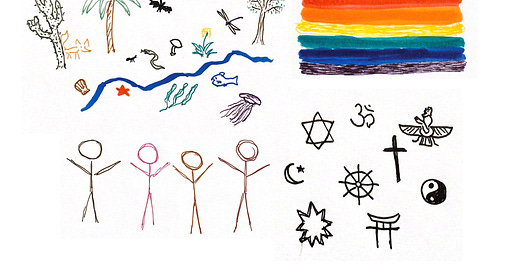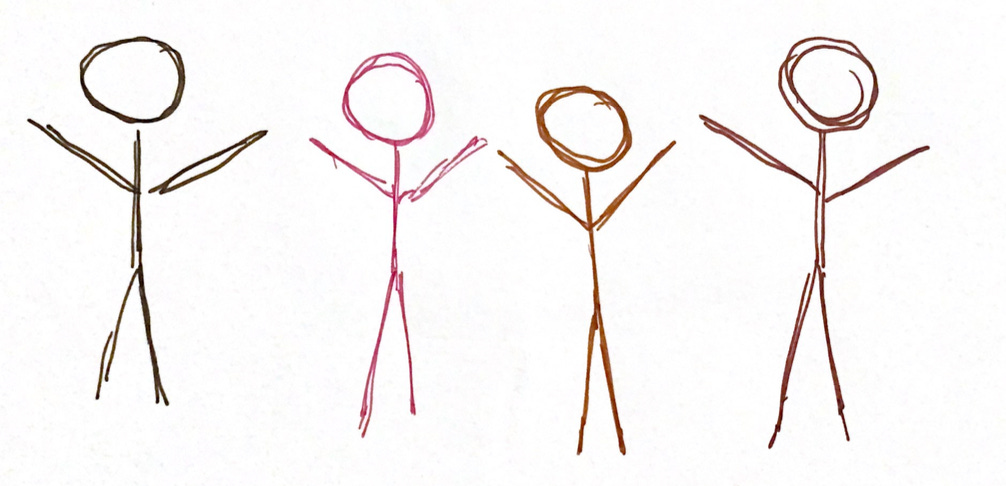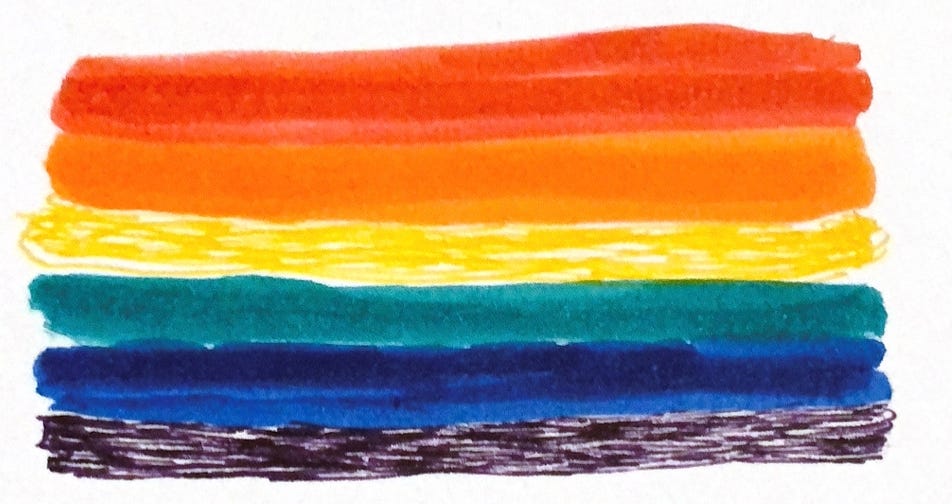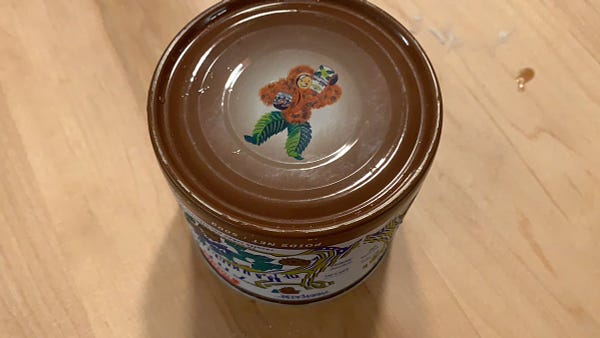EDIT, August 31st, 2022: This is an introduction to a series of posts on diversity. For easy access, here is a sort of table of contents:
The value of various kinds of diversity:
The post below introduces many types of diversities, including those in the value of diversity posts above, and a few others.
Hello and welcome to issue #21 of Light Gray Matters, delivered directly into your inbox every Wednesday night if you have subscribed, which you should if you haven’t already.
I’m not sure how that will play out, but I’m thinking of using this newsletter as a way to draft what will become my Intellectual Project (god that sounds so pompous). It’ll be half-baked ideas as usual — but at least, half-baked ideas around some coherent theme.
(Although this Intellectual Project’s scope is pretty much all of reality, so maybe not that coherent.)
Last week I wrote, after naming a few of my interests like evolution and culture and beauty:
All these things are related to an underlying concept. For now, let’s call that concept “diversity.” I don’t like the word that much, though, because it is somewhat too broad. It can be interpreted in many, uh, diverse ways.
It’s probably not a groundbreaking idea that diversity is itself diverse, but let’s pretend it is, and try to map as many types of diversities as we can think of.
Individual human diversity
In the current zeitgeist, the word “diversity” readily evokes racial or ethnic diversity. In fact most dictionaries now add a secondary definition to the word, e.g. in Merriam-Webster:
the inclusion of of [sic]1 people of different races, cultures, etc. in a group or organization
Ethnicity is one of the most visible identity markers, due to clear anatomical differences like skin and hair color as well as the morphology of the face (e.g. slanted eyes). But of course there are countless ways humans differ from one another, and accordingly many ways a group of humans may or may not be diverse.
There is sexual diversity. A group with both women and men is more diverse than a group made of only one of the sexes. And then there are many sexual and gender minorities — homosexuals, bisexuals, nonbinary people, trans people, and so on. The LGBT rainbow flag is in fact explicitly designed to represent this diversity.2
There is neurodiversity — a term that describes the various ways the human brain works, especially in regard to conditions on the autism spectrum.
Racial, sexual, and neurological diversity are mostly biological forms of diversity. There are of course many other dimensions of human biology that can vary — height, body shape, blood type, cognitive functions, and, really, anything genetic.3 Other types of diversity are more cultural:
There is linguistic diversity. Humanity collectively speaks 7,000 to 8,000 languages — each of which is an extremely complex system, as anyone who tried learning a foreign language knows. Within each language, there are various dialects and accents; we even have a word for the linguistic peculiarities of individual people: idiolects. This is a form of diversity that’s extremely noticeable since it impacts communication. So it’s not surprising that we have myths, like the Tower of Babel, to explain its origin.
There is religious diversity. There are few major religions — Christianity, Islam, Hinduism, and Buddhism are the only ones with more than 100 million adherents — but there are countless smaller ones, from new religious movements to small ancient religions like Zoroastrianism, to various forms of animism, to other forms of spirituality. And that’s not even considering the many ways in which major faiths are interpreted — a Catholic indigenous Maya in Mexico is very different from an evangelical Protestant in South Korea.
There is political diversity. The meaning of this changes with the times, of course. But it is often starkly visible, and so communists, liberals, conservatives, libertarians, social democrats, monarchists, socialists, fascists, etc. tend to be very aware of the differences between them. More generally, we can talk of diversity of thought — on any single issue, people may hold variety of opinions. Diversity is the opposite of groupthink.
There is artistic diversity in the way people create music, paintings, fashion, architecture, and anything designed. Diversity is often desirable in art, although it often goes by a different name: originality. Artists and designers seek to create new, never-seen-before works, thus always increasing total diversity.
There is also economic diversity — rich and poor and middle-class people. This is often called inequality and is seen as undesirable, but it certainly exists. People in fact like to self-segregate by social class, which is why, if you’re university-educated, it’s likely that most people around you also are university-educated, even if most people in the general population aren’t.
Lastly, I want to mention temporal diversity, a concept I just came up with to describe cultural differences between people of different eras. Usually we notice this only from the traces people have left from the past, like books. Plato and Aristotle certainly were culturally different from us. In science-fiction scenarios, this could also happen, for instance, if cryonically preserved people were awakened far into the future.
Let’s stop here. There are other types of diversity, but you get the idea.
Diversity at the higher levels
When you place a bunch of humans together, the group takes on a life of its own, with emergent properties. Thus we can also compare the diversity of groups.
Sometimes this actually runs contrary to diversity at the lower level. Consider two countries. In the first, each of three major cities has a balanced, diverse ethnic makeup: 33% Norwegians, 33% Sri Lankans, and 33% Congolese. In the second country, there is a 99% Norwegian city, a 99% Sri Lankan city, and a 99% Congolese city. Which country is more diverse? I would argue that the second is, because its cities are more different from one another, even if individually they are more diverse. But “argue” is the keyword here — who’s to say any level is more important than the other?
(And if we go one level higher, a world with those two countries would be more diverse than a world in which they were the same!)
Group diversity can be seen in any type of group. Countries are very diverse in e.g. population, area, political systems. Companies are diverse. Families. Schools. Cities. Groups of friends. Planets, if we were a multiplanetary civilization.
Biodiversity
Beyond humans, there is a staggering number of other types of living beings, from bacteria to sequoia trees to tigers to jellyfish to cacti to termites to yeasts to triceratops. Biodiversity is often seen as precious, and its protection is en environmental issue. Perhaps the value of biodiversity was best expressed by the great biologist E.O. Wilson:
Each higher organism is richer in information than a Caravaggio painting, a Bach fugue, or any other great work.
But what exactly is biodiversity? Usually, the way to do it is to count species (even though almost no concept is as controversial in biology as the concept of species). An environment with more species is more diverse, simply. This too can apply to various levels, from individual populations to the entire biosphere.
There are other ways to count, though. For instance, ecological diversity is about differences in ecological niches — if you have many species doing their own thing, this is more ecologically diverse than having the species compete for the same resource. Phylogenetic diversity is about the evolutionary relationships. Two closely related, similar species of birds make a less diverse population than a mixture of ostriches and hummingbirds. Genetic diversity goes beyond species and looks at the DNA directly: genes, alleles, mutations.
And since each section is apparently ending with sci-fi, let’s add prospective alien life to the mix. All life on Earth is related, but if we discovered life forms that arose completely independently, that’d mean we’d be living in a much more diverse universe than we’ve known so far.
Non-living biodiversity
Why stop at the living, though?
There is diversity in everything. Landscapes, from deserts to savannas to rainforests to polar ice caps. Weather phenomena (types of clouds, of precipitation, of wind…). Rocks and minerals (there are officially 5,650 recognized minerals). Celestial bodies — stars all look like points from here, but in fact:
Even the very nature of matter itself is diverse. There are 94 naturally occurring elements in the periodic table! (118 if counting the synthesized ones.) At the subatomic level, it looks like things are less diverse, although at that point we get into the fundamentals of physics and a lot of our intuitions about the world break down anyway.
At the opposite end of the magnitude spectrum, we know of a single universe — but if the multiverse theory is true, then there might be a vast diversity of universes as well. Or timelines, if the universe is constantly branching into parallel universes as some hypothesize.
“Okay Étienne, you’ve just shown that many things are diverse, what’s your point?”
Gee, no need to be aggressive about it! There isn’t really a specific point — basically, I couldn’t remember ever reading of a list of diversities, so I decided to make one. I think it’s a worthwhile exercise. Even though it’s self-evident that the world is diverse, we don’t usually think of it that way (except for diversity and inclusion programs in companies).
Also, this is laying some groundwork in order to talk about more important questions, like “what is interesting?” Catch you all next Wednesday to dive into that. Until then I remain
Yours in a thousand thousand diverse ways,
Étienne
P.S. Meanwhile on Twitter:

Ah, the joys of newsletter writing. The crêpes, by the way, were delicious.
I am so proud of having noticed the second “of”
There are also variations of the rainbow flag that seek to represent even more diversity.
Somehow, though, the perfectly innocuous phrase “human biodiversity” is now seen as a code phrase for some forms of racism, so it is better avoided.












